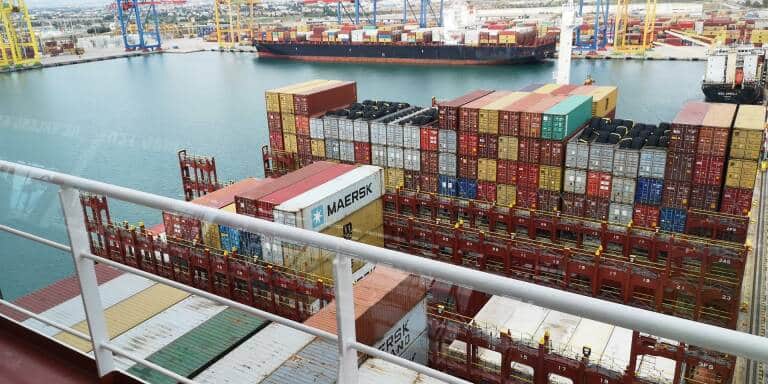All export sectors of the Valencian Community presented increases in the first two months of the year, according to the latest Foreign Trade report from the Ministry of Industry, but the region has dropped to fourth place nationally.
It was Catalonia, which monopolises almost a quarter of Spanish exports, which was at the top of the rankings with 13,7 billion euro. Behind was Madrid with a share of 13.6% and foreign sales of 7,6 billion euro, then Andalusia and the Valencian Community presented market shares of 11.2% and 11% respectively.
Regional exports experienced an advance of 22.2% in the January-February period compared to 28.3% of the national total, whose figure rose to 56,5 billion euro. In this sense, the Spanish trade balance registered a deficit of 10,7 billion euro under a situation conditioned by the rise in energy prices, accentuated without a doubt after the Russian invasion in Ukraine.
However, the Valencian Community presented a trade surplus of 32.7 million euro. A figure that comes from the difference between exports (6,2 billion) and imports (6,1 billion). For its part, the coverage rate -percentage of imports that can be paid with exports- stood at 100.5%.
Rafa Climent, Minister of Sustainable Economy, Productive Sectors, Commerce and Labour, highlighted in a statement “the positive trajectory” of this process that “is consolidated upwards in the first months of 2022” after the pandemic, highlighting the “commitment of the companies of the Valencian Community for foreign markets, with products capable of competing in any market”.
Food, beverages, and tobacco was the sector that contributed the most to regional exports with 1,4 billion (+5.3%), which represents 23.4% of the total; followed by non-chemical semi-manufactures with 1 billion (+29.4% and 16.4%); and automobile with 1 billion (+37.3% and 16.3%). In growth in percentage terms, energy products (+102.4%) and raw materials (+36.7%) stood out, with sales worth 287.7 million and 168 million, respectively.
By geographical areas, the hegemony of exports to the European Union is maintained, accounting for 57.5% of the total, with an advance of 18.3% compared to January-February 2021; in the case of sales to the Eurozone -with a weight of 49.6%- they increased by 17.6%; while those destined for the rest of the European Union, 7.9%, rose by 22.8%.
The increases accumulated up to February in sales to Italy (+44.5%), Portugal (+35.7%) and France (+9.6%) stood out. In the rest of Europe, sales to Turkey rose 64.8% and sales to the UK increased 16.3%.
As far as third destinations are concerned, growth was 28% year-on-year, and they already represent 42.5% of the total. To highlight the increases in exports to Latin America (+74.9%), Oceania (+65.1%), the Middle East (+27.5%), Africa (+25.7%), Asia excluding the Middle East (+18.5%) and North America (+15.9%).
Lastly, and in terms of third-party destination countries, the best numbers were presented by sales directed to Argentina (+268.4%), Mexico (+59.7%), Australia (+54.7%), Chile (+40.3%), Algeria (+37.9%), Japan (+37.8%), Taiwan (+33.8%) and Brazil (+33.2%). Quite the opposite of India (-21.1%), South Africa (-20.4%), Egypt (-7.9%) and Hong-Kong (-5.7%).





